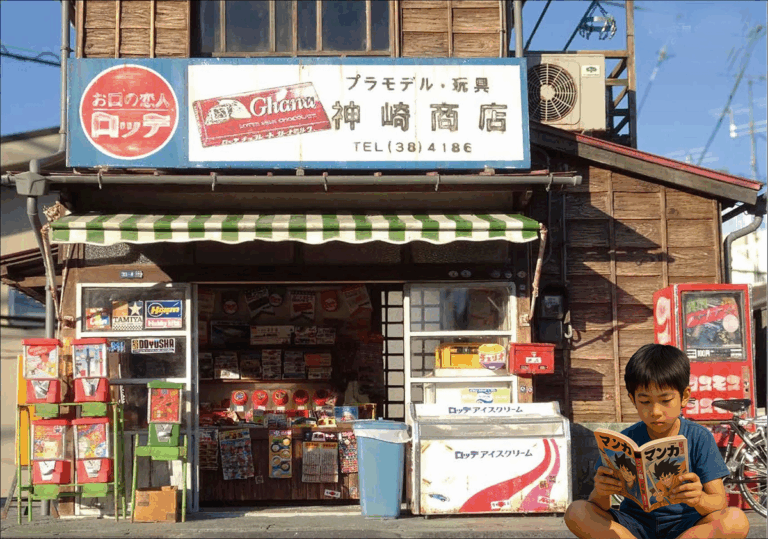How Japanese dam otakus enjoy dams
People around the world have fallen down the dam rabbit hole.
You might think, “Are there really people who are obsessed with dams?” Absolutely! Dam enthusiasts exist all over the world — from “dam hunters” in the U.S. to European travelers chasing record-breaking structures. Many share dramatic water release videos and discuss dam structures online.
In Japan, the dam scene is uniquely evolved, with hands-on exploration, dam card collecting, and seasonal sightseeing events like no other country.
And that, my friend, is exactly what it means to be a dam otaku — someone who can’t help but dive deep into the world of dams and savor every detail.
What Makes Japanese Dam Culture Unique?
Overseas dam fans often prioritize the biggest, tallest, or oldest dams — chasing world records. In contrast, Japan’s dam lovers embrace the “experience”: trekking deep into mountains to see hidden dams, collecting dam cards, and attending special flood release events. This unique culture celebrates detailed observation, direct interaction with dam staff, and an appreciation for each dam’s individual story.
Minato’s Recommendations: 7 Must-See Dams in Japan + Extras
Kurobe Dam (Toyama)
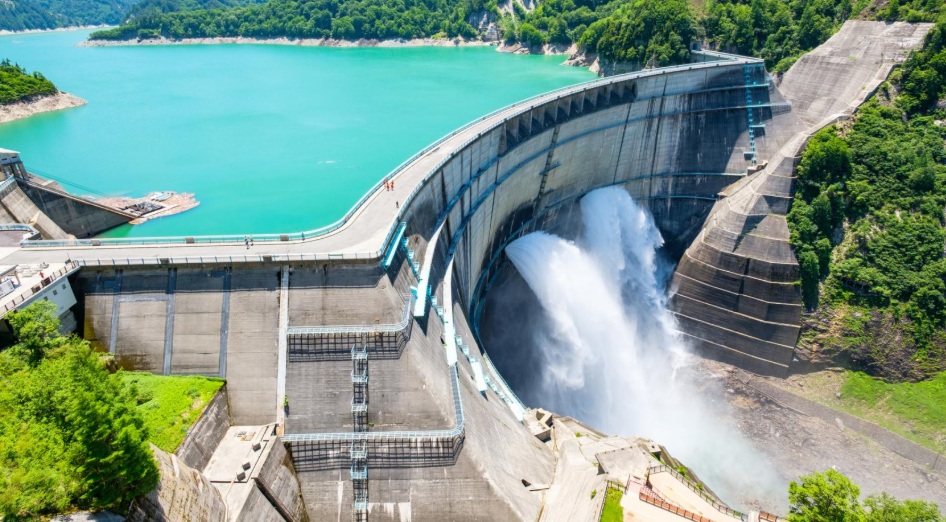
Japan’s tallest dam (186 m), completed in 1963 after a grueling construction through harsh mountain conditions. The 492-meter-wide arch dam is a breathtaking engineering marvel and an energy lifeline. Visitors today flock to witness the thunderous summer water releases and misty Kurobe Gorge scenery.
🚗 Access: ~16 minutes by electric bus from Ogizawa Station.
🎯 Nearby: Tateyama Kurobe Alpine Route, Lake Kurobe cruises.
Miyagase Dam (Kanagawa)

A 156-meter-high gravity dam finished in 2000, featuring massive releases visible from directly below thanks to an elevator-access viewing area. Its 375-meter-long crest and 2 million m³ of concrete make it one of Japan’s largest modern dams.
🚗 Access: ~60 minutes by bus from Odakyu Hon-Atsugi Station.
🎯 Nearby: Miyagase Lakeside Park, Aikawa Park, scenic suspension bridges.
Okutadami Dam (Niigata/Fukushima)
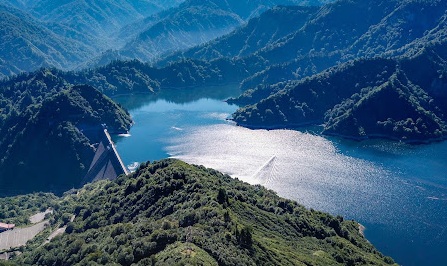
A 157-meter gravity dam famous for its 18-km approach tunnel, the Silver Line. This dam has Japan’s largest effective storage capacity and impressive hydropower production. After a long underground drive, visitors emerge to stunning Lake Ginzan scenery.
🚗 Access: Via the Okutadami Silver Line to the dam parking lot.
🎯 Nearby: Ginzan-daira hot springs, Lake Ginzan cruises, Okutadami Electric Museum.
Naramata Dam (Gunma)
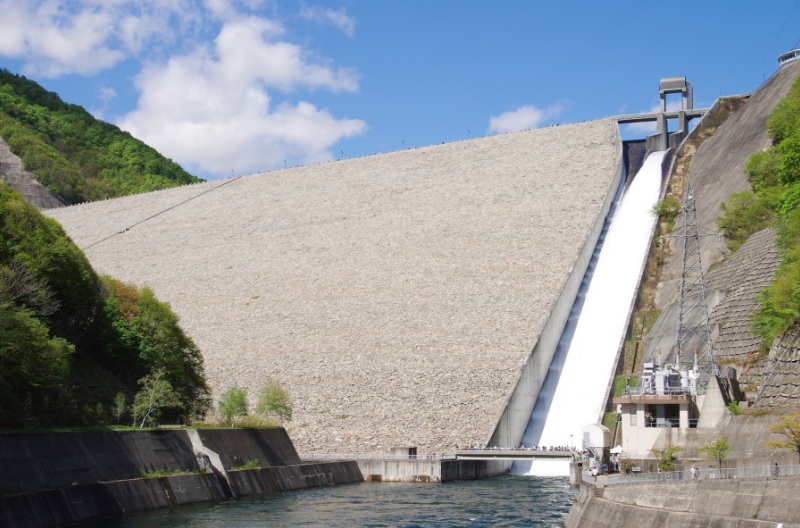
Japan’s tallest rock-fill dam (158 m), with a striking stone façade. Built with 13 million m³ of rock, it supports flood control, irrigation, and hydropower. Movie fans may recognize it from Whiteout. Visitors can explore lakeside museums and sometimes interior galleries.
🚗 Access: ~40 minutes by car from Minakami IC.
🎯 Nearby: Tanigawadake Ropeway, Minakami hot springs.
Miwa Dam (Nagano)
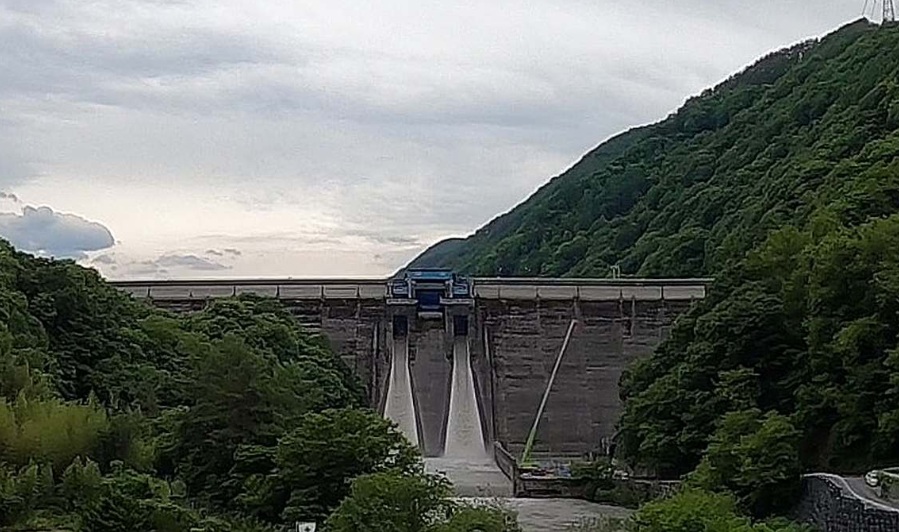
A 69-meter-tall gravity dam with a distinctive left-bank gate cluster. Built in the 1950s, it now faces severe sedimentation, prompting innovative bypass tunnel construction.
🚗 Access: ~30 minutes by car from Ina IC.
🎯 Nearby: Takato Castle Park (cherry blossoms), Takato hot springs.
Ogouchi Dam (Tokyo)
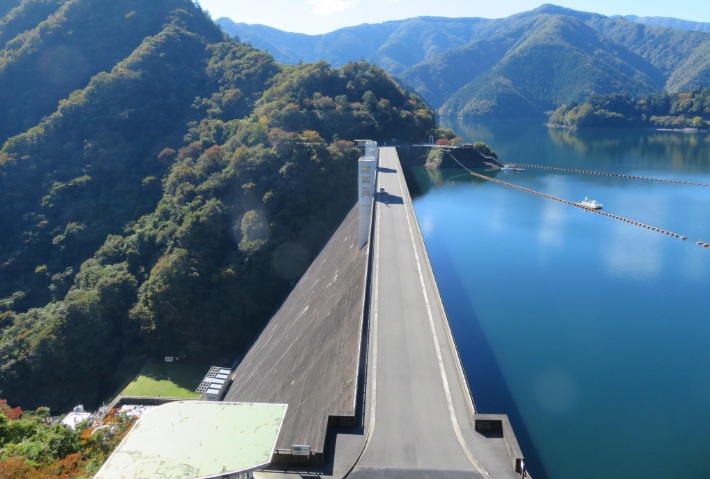
A 149-meter-high gravity dam that created Lake Okutama, Tokyo’s water source. Built 1936-1957, it’s a symbol of pre- and post-war engineering, with giant roller gates and a retro-modern design.
🚗 Access: ~20 minutes by bus from JR Okutama Station.
🎯 Nearby: Walks around Lake Okutama, Moegi-no-Yu hot spring.
Tsuruta Dam (Kagoshima)
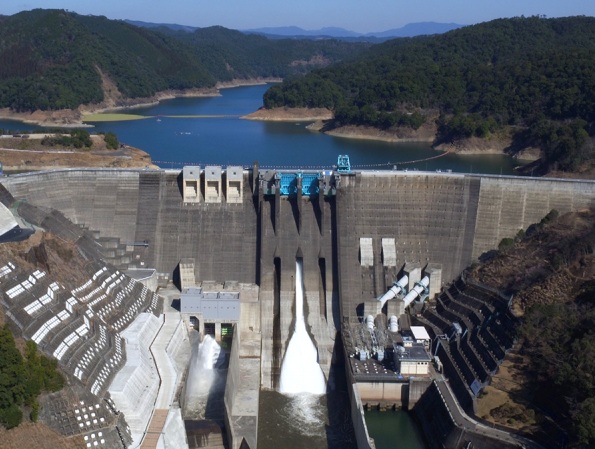
117.5 meters tall, 450 meters long, and known as “Kyushu’s Guardian” for flood control. Built 1959-1965, it’s undergoing upgrades to handle increasing rainfall after the 2006 deluge.
🚗 Access: ~40 minutes by car from Izumi Station.
🎯 Nearby: Izumi Samurai Residences, winter crane migration sites.
Extras: Sakuma Dam (Tenryu River) and Hiyoshi Dam (Kansai) are also worth visiting.
The Delicious World of Dam-Themed Curry
What’s dam curry? There’s no strict definition, but it generally falls into three types:

- Curry near a dam: Ordinary curry named after a nearby dam, like Oyama Dam Curry.
- Curry inspired by curry aesthetics (Kurobe style): Rice shaped like a dam without actually holding the curry; side items add visual flair.
- Curry inspired by dam function (Sanshuya style): Rice acts as a real dam holding back the curry; when you break it, curry flows out like a reservoir release.
Once your dam curry arrives at the table, take a moment to appreciate its miniature dam design — the arrangement of rice, curry, and toppings often reveals the chef’s playful take on the dam’s features. Try to guess which dam inspired the shape, snap some photos from different angles, and then, when you’re ready, break the rice “dam” dramatically and let the curry rush out like a powerful release. That’s the ultimate way to savor the experience!
※The official website of the Japan Dam Curry Association
TIPS: Learn the Basics to Deepen Your Dam Appreciation
- Gravity Concrete Dam: Withstands water pressure by sheer weight — often straight and imposing.
- Arch Dam: Curved beauty that transfers pressure to canyon walls.
- Rock-Fill Dam: Wild and rugged embankments made of rock and earth.
Get Your Dam Cards: Japan’s Unique Collector’s Item
Dam cards are Japan’s original collectibles for dam enthusiasts — and they’re not just cards, but a reason to travel! Distributed for free at dam management offices, each card features detailed specs, history, and trivia about the dam.
But what makes them truly fun is the adventure of getting them:
- You have to physically visit each dam or its management office, sometimes trekking deep into mountains.
- Along the way, you experience breathtaking nature, local food, and even the thrill of watching a dramatic water release.
- Every card becomes a memento of your journey — proof you made it there in person.
This turns dam visits into a treasure hunt, with each new card fueling your desire to explore more dams across Japan. For dam otaku, collecting dam cards isn’t just a hobby — it’s a mission!
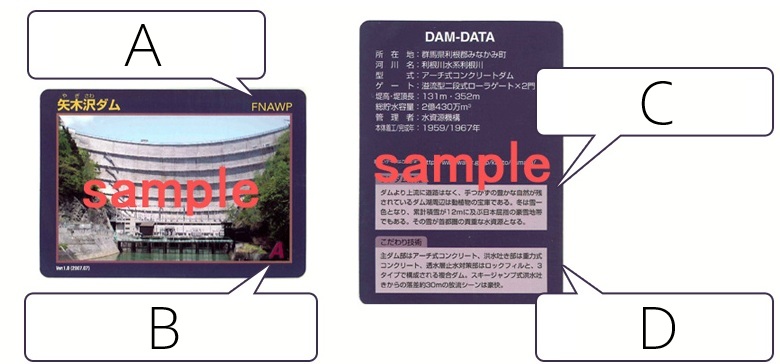
Dam cards, given out at dam offices, feature detailed stats and trivia. A typical dam card includes:
A: Dam Purpose — Explanation of FNAWIPSR
- F: Flood control
- N: Maintenance of normal river flow
- W: Water supply
- I: Industrial water
- A: Irrigation
- P: Power generation
B: Dam Type Abbreviations
- G: Gravity concrete dam
- HG: Hollow gravity dam
- A: Arch concrete dam
- GA: Gravity arch dam
- E: Earthfill dam
- R: Rockfill dam
C: Random Information
Fun facts about the dam or local area.
D: Special Features
Unique technologies or design points of the dam.
Don’t Miss Event Info
Sightseeing releases and special tours are often seasonal. Always check the official websites before your trip.
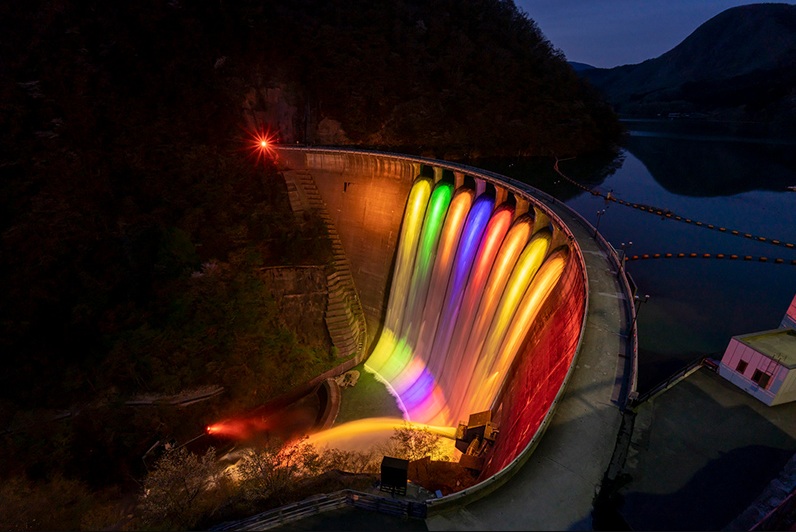
Dive Into Japan’s Fascinating Dam Culture
Dams are far more than giant walls holding back water — they’re feats of engineering, symbols of local history, and gateways to beautiful nature. Whether you’re a hardcore dam enthusiast or a curious traveler, exploring Japan’s diverse dams, tasting dam curry, and collecting dam cards can reveal a whole new world. Start planning your journey into Japan’s dam culture today — and don’t forget to let the curry flow!
Would you like a shorter or more beginner-friendly version?
You might also be interested in these articles
■Tetsu-Ota: The Fascinating World of Japan’s Rail Enthusiasts

Born in Japan, raised in Toronto. I dive deep into anime, pop culture, and history — bringing both otaku vibes and global views.






